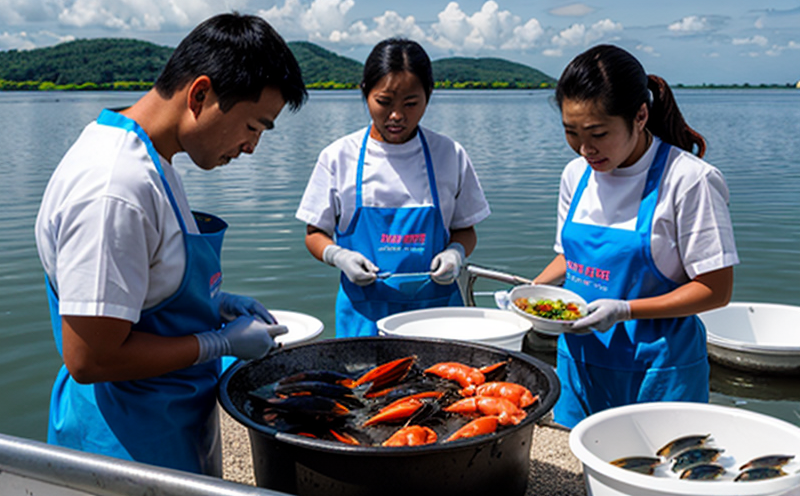ISO 24333 Pesticide Residue Screening in Seafood
The importance of ensuring food safety and quality cannot be overstated, particularly when it comes to seafood. Seafood forms a significant part of the global diet, and its safety is paramount for public health. ISO 24333 provides robust guidelines for detecting pesticide residues in seafood, which helps in maintaining compliance with international standards and regulations.
The process typically involves several critical steps, starting from sample collection to final analysis. Proper sampling ensures the representativeness of the batch being tested. Once collected, samples are prepared by homogenizing them into a uniform mixture. This step is crucial as it can significantly impact the accuracy of detection.
Following preparation, the samples undergo extraction processes tailored for different types of seafood. The choice of extraction method depends on the specific pesticides targeted and the type of seafood being tested. Common methods include liquid-liquid extraction and QuEChERS (Quick, Easy, Cheap, Effective, Rugged, and Safe) techniques.
After successful extraction, the samples are analyzed using state-of-the-art instrumentation such as Gas Chromatography-Mass Spectrometry (GC-MS) or Liquid Chromatography-Mass Spectrometry (LC-MS). These instruments offer high precision and sensitivity necessary for detecting even trace amounts of pesticides. The results obtained from these analyses are compared against established thresholds set forth by relevant international standards.
Compliance with ISO 24333 ensures that seafood products meet safety requirements both domestically and internationally, thereby protecting consumers' health while maintaining trade agreements. By adhering to this standard, laboratories demonstrate their commitment to providing accurate, reliable test results which are essential for ensuring the integrity of food supply chains.
Applied Standards
The application of ISO 24333 involves rigorous adherence to its specified procedures and criteria. This includes selecting appropriate analytical methods based on the specific pesticides under investigation and ensuring that all reagents used comply with the requirements outlined in the standard.
- For instance, when dealing with organophosphates, it's important to follow precise protocols for sample preparation and clean-up procedures.
- The use of certified reference materials (CRMs) helps validate analytical methods by providing consistent data points across different laboratories.
Quality and Reliability Assurance
The quality assurance process for ISO 24333 involves several key components aimed at maintaining high standards throughout the entire testing procedure. Regular calibration of instruments ensures accurate results, while internal audits help identify potential areas for improvement.
- Internal proficiency tests simulate real-world conditions to evaluate performance and consistency.
- Participation in external proficiency schemes provides additional validation through independent assessment by other recognized laboratories.
Environmental and Sustainability Contributions
The implementation of ISO 24333 contributes positively to environmental sustainability efforts. By detecting pesticide residues early, there's an opportunity to prevent contaminated seafood from reaching consumers, thus reducing the overall impact on ecosystems.
- Pesticide reduction strategies in agriculture indirectly benefit marine life by minimizing chemical runoff into water bodies.
- Consumer education campaigns supported by accurate test results encourage more informed choices about sustainable consumption practices.





